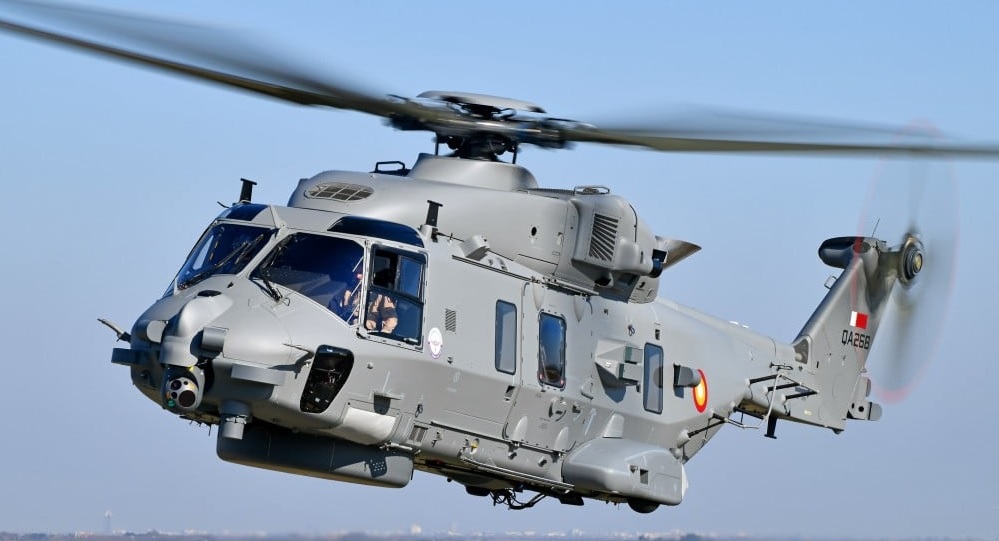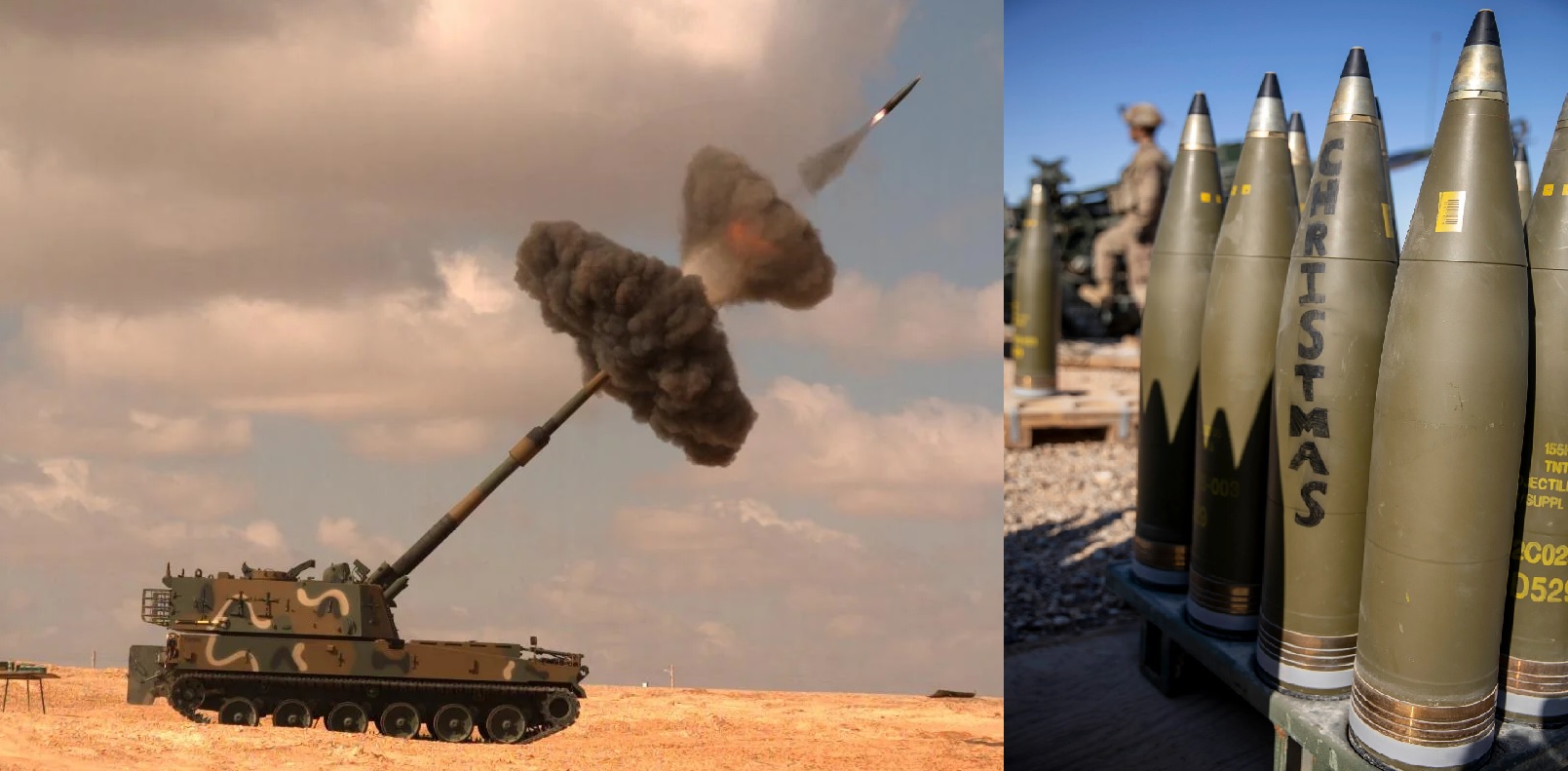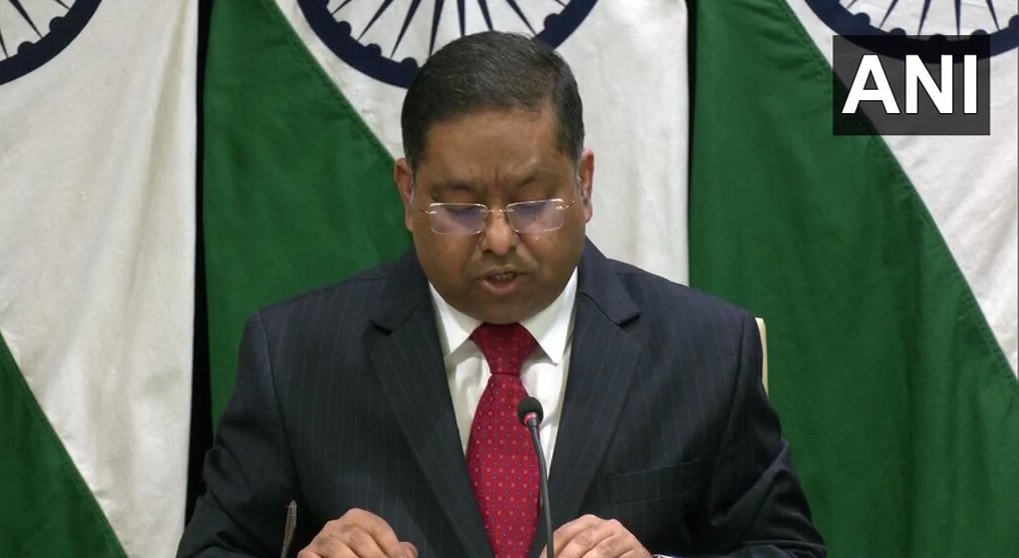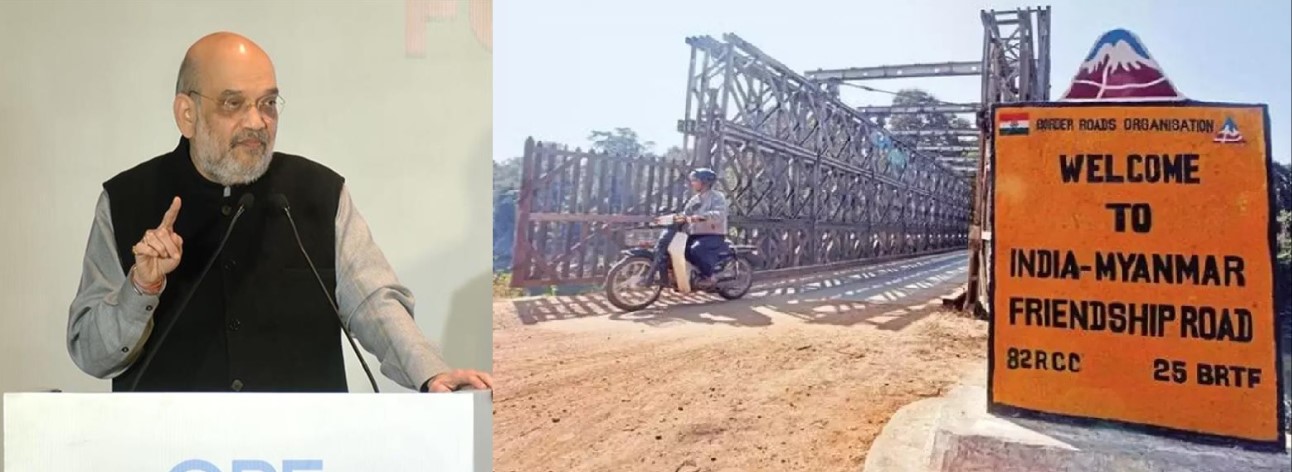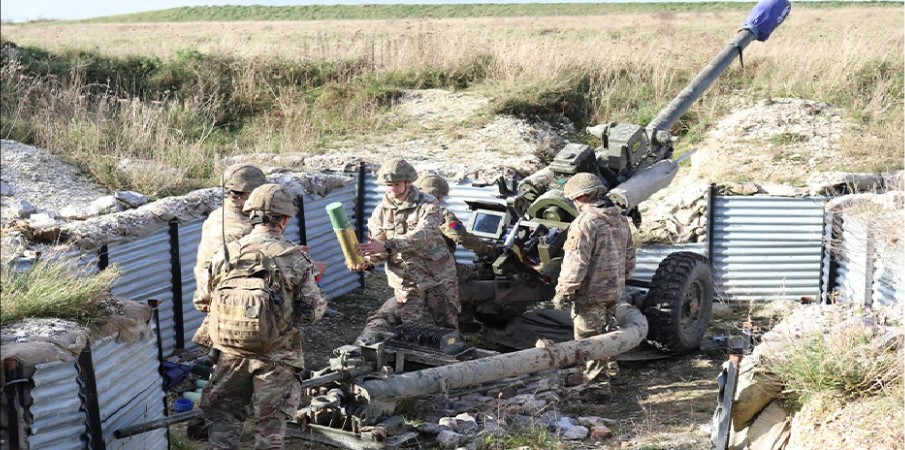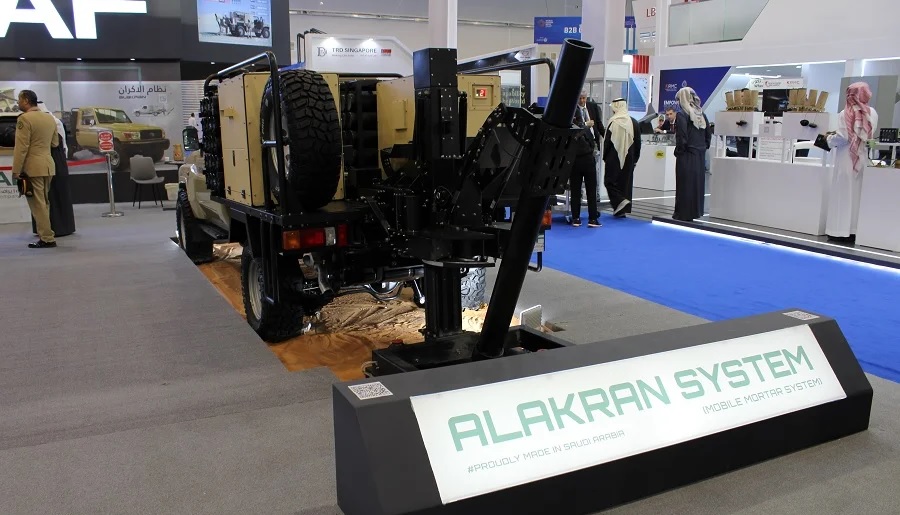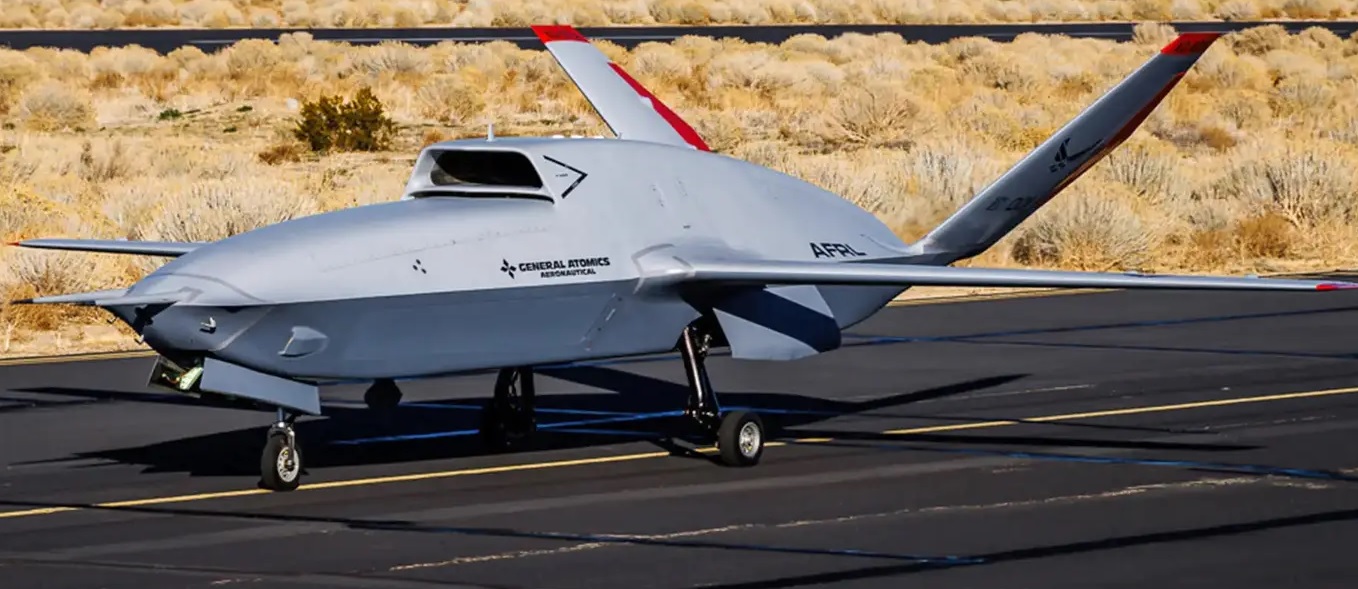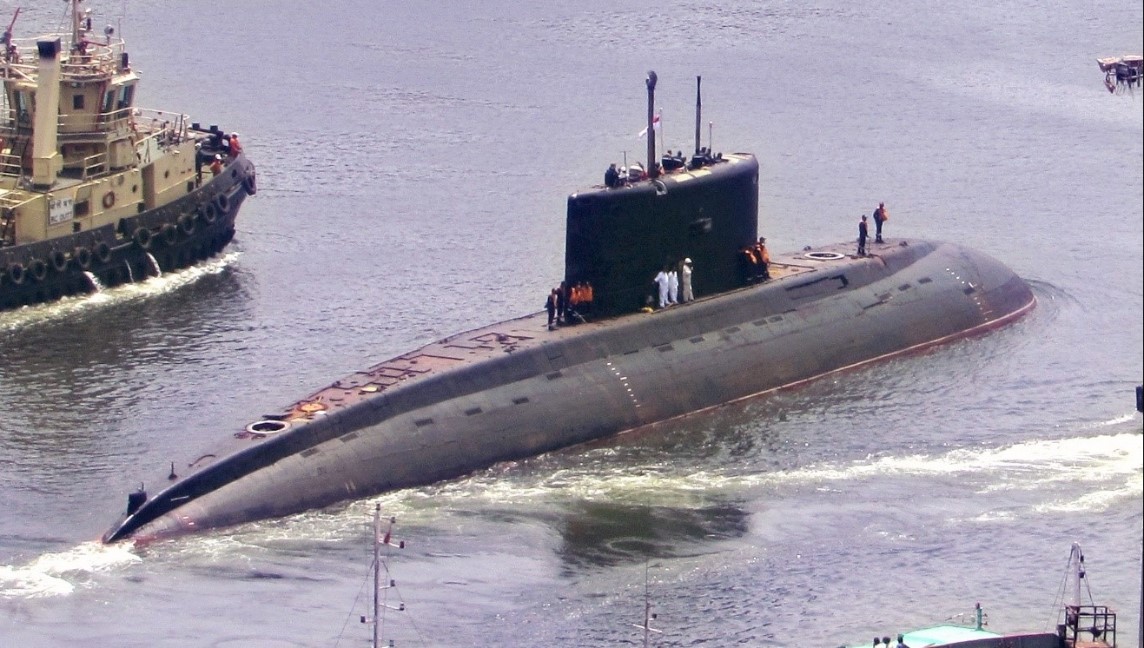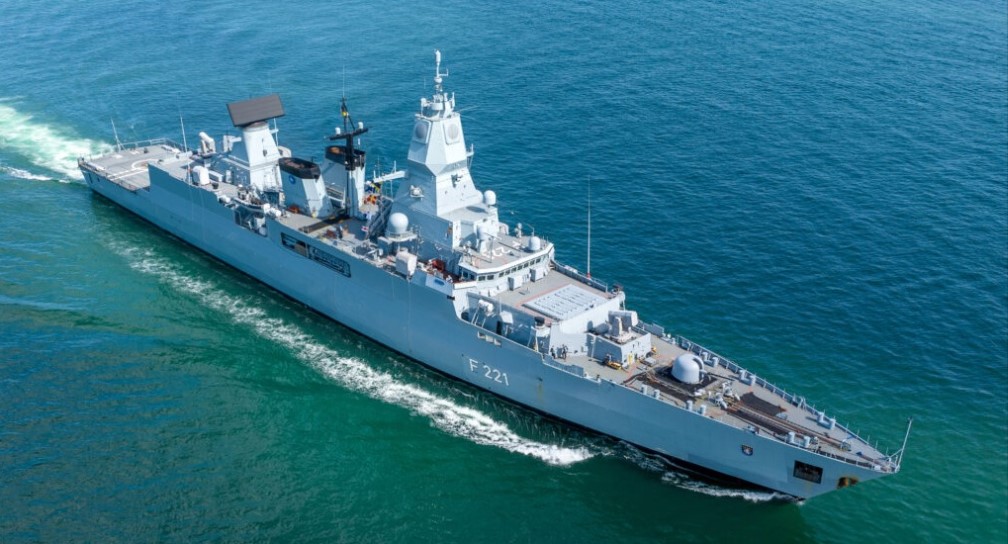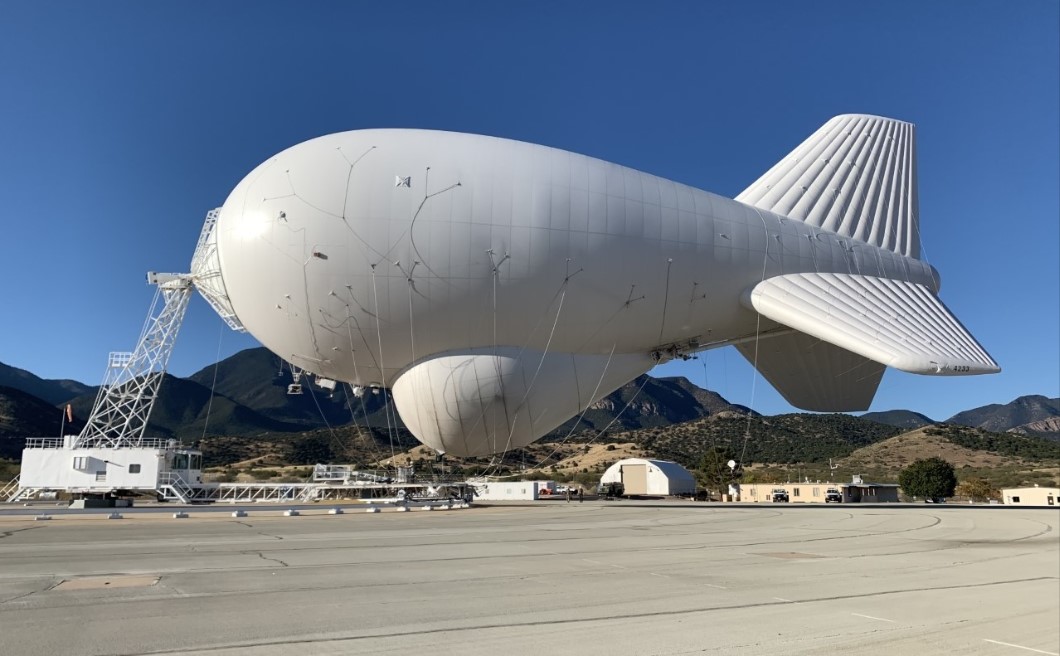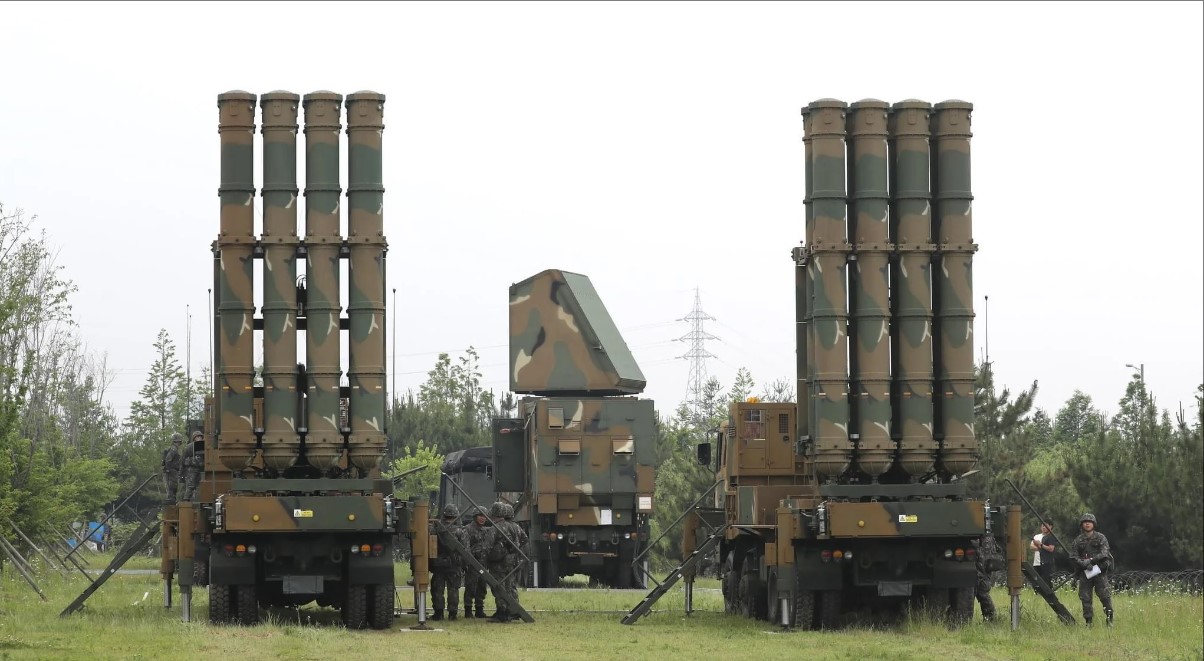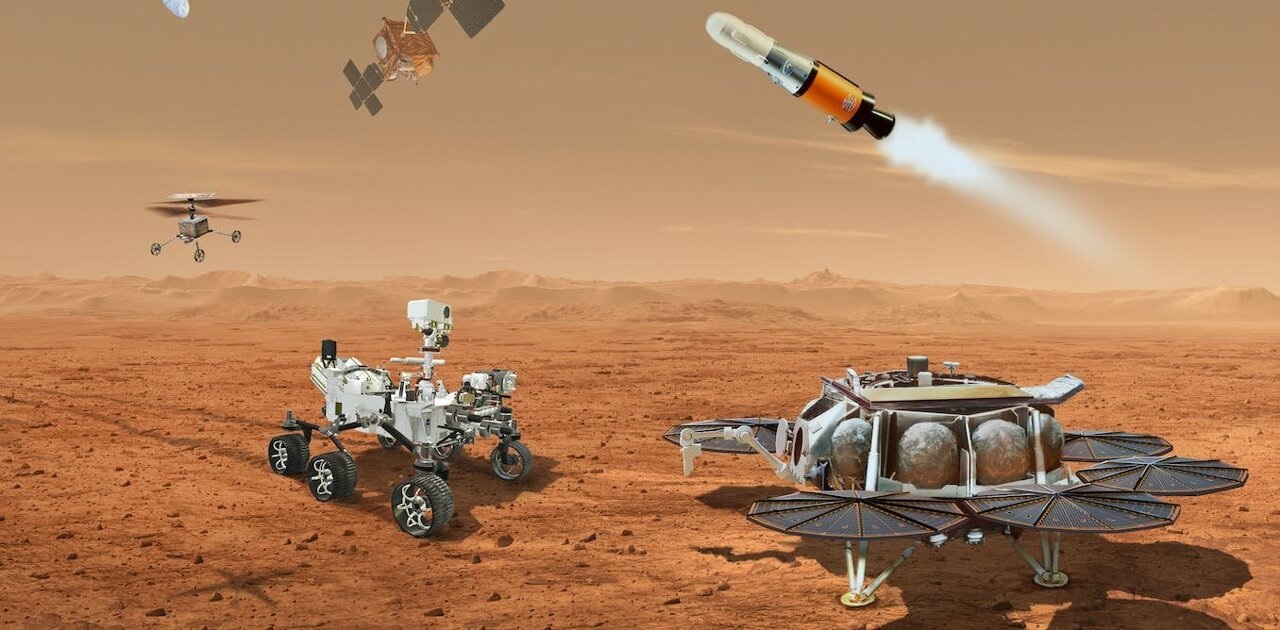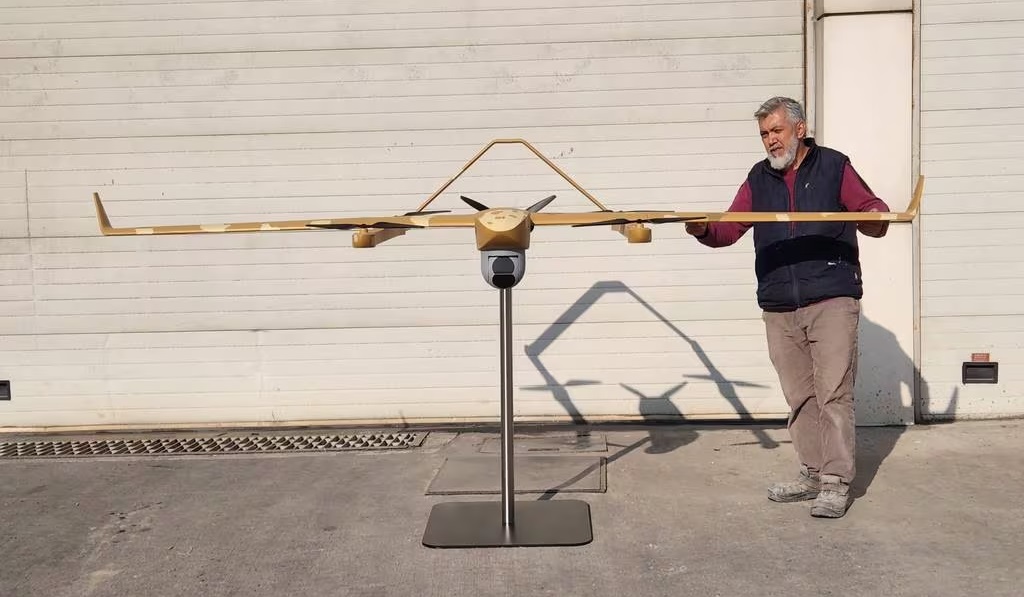World
Defense News ,Germany :- Quantum Systems, a leading drone innovator based in Munich, has introduced its latest LiDAR scanner, the Qube 640. Developed in partnership with YellowScan for the Trinity Pro eVTOL fixed-wing drone, this lightweight and advanced LiDAR system aim to enhance precision in aerial data collection while reducing costs.Florian Seibel, CEO of Quantum Systems, expressed their commitment to pushing the boundaries of drone technology with the Qube 640. The LiDAR system empowers professionals to make faster decisions based on accurate data, improving workflows, and doubling productivity.The collaboration between YellowScan and Quantum Systems has resulted in innovative features, including an automated command and control interface integrated into the Trinity Pro remote controller. This partnership focuses on continually enhancing user experience and productivity for professionals relying on robust mapping solutions.The Qube 640 revolutionizes data acquisition across various applications, including powerline inspections, vegetation surveys, archaeological exploration, and forestry management. It proves valuable in mining operations, offering 3D representations for volume calculations and stockpile monitoring. The LiDAR system provides actionable insights for diverse industries through outputs like colorized 3D point clouds, Digital Elevation Models (DEMs), and 3D contour maps.Key features of the Qube 640 include a selectable field of view (FOV) of up to 176° and Trinity Pro's capabilities for an impressive 32 km corridor data acquisition. With a 120° FOV, it enhances productivity by 50% compared to its predecessor, the Qube 240. The LiDAR sensor excels in detailing foliage and tree trunks, enabling vertical scanning and minimizing outer edge mismatches through an advanced IMU. The integration of an 8MP RGB camera allows colorizing the LiDAR dataset in a single flight, streamlining data gathering and enhancing overall efficiency.The Qube 640 boasts tight integration with the Quantum-Skynode autopilot, enabling simple, autonomous operations and workflows. Combined with Trinity Pro's capabilities, it achieves an impressive flight endurance of 60 minutes, making it the most efficient LiDAR system available on a drone. This technology brings airborne LiDAR efficiency to customers across industries, enabling faster and more precise mapping on a larger scale.
Read More → Posted on 2024-02-09 06:40:25India
Defense News ,India :- External Affairs Minister S Jaishankar is all set to attend the 7th Indian Ocean Conference in Perth, Australia, starting this Friday. The conference theme is "Towards a Stable and Sustainable Indian Ocean," emphasizing the importance of maintaining a secure and eco-friendly region.The two-day event, scheduled for February 9 and 10, is a significant forum for Indian Ocean Region countries. It is organized annually by the Ministry of External Affairs in collaboration with the India Foundation. The Australian Government's Department of Foreign Affairs and Trade, along with Singapore's S Rajaratnam School of International Studies and the Perth-US Asia Centre, are key partners for this edition.Jaishankar will address the inaugural session, sharing the stage with Sri Lankan President Ranil Wickremesinghe, Australian Foreign Affairs Minister Penny Wong, and Singaporean Foreign Affairs Minister Vivian Balakrishnan.Over 22 countries will send ministerial delegations, and senior officials from 16 countries and six multilateral organizations will participate. The conference will also bring together over 400 leaders, including social and corporate figures, policy practitioners, scholars, professionals, and media personnel from around 40 countries.The conference aims to foster cooperation and discuss regional challenges, building on its role since its inception in 2016. The platform has become crucial for countries and maritime partners to collaborate on regional security and growth. Australia's commitment to host the conference in 2024 highlights its significance as a platform for practical solutions to key challenges facing the Indian Ocean region.Jaishankar's recent meeting with the Australian High Commissioner, Philip Green, showcased the ongoing bilateral partnership between India and Australia. The upcoming conference promises to be an opportunity for nations to strategize and collaborate on practical solutions for the region's pressing issues, further solidifying the Indian Ocean Conference's role as a consultative forum over the past six years.
Read More → Posted on 2024-02-09 06:34:11World
Defense News, France :- In December 2023, the French defense agency approved getting eight more NH90 Tactical Troop Helicopters (TTH) for their Special Operations Forces (SOF). The NATO Helicopter Management Agency (NAHEMA) then signed a deal with NHIndustries, a team of Airbus Helicopters, Leonardo, and Fokker, to make it happen.NAHEMA and NHIndustries also updated their contract to adapt the NH90 TTH for the evolving needs of the French Special Operations Forces.The Defense Procurement Agency expects to get all eight new helicopters from 2027 to 2029, spending EUR 305 million on the purchase. France had already ordered 10 NH90 TTH helicopters for its Special Operations Forces in 2020.Here are some details about the NH90 TTH:Role: Military transport helicopterManufacturer: NHIndustries (Airbus Helicopters, Leonardo Helicopters, and Fokker Aerostructures)Length: 19.56 meters (with rotors turning)Height: 5.31 meters (at tail rotor)Main rotor diameter: 16.30 metersEmpty weight: 6,400 kgMaximum takeoff weightkeoff weight: 10,600 kg (Tactical Transport Helicopter - TTH) / 11,000 kg (Naval Frigate Helicopter - NFH)Engines: 2 × Turbomeca RTM322-01/9 or 2 × General Electric T700/T6E1Max speed: 300 km/h (basic aircraft @10t)Cruise speed: 260 km/hRange: 780 km (internal fuel)Ferry range: 1,600 km (with auxiliary fuel tanks)Service ceiling: 6,000 metersCrew: 1-3 (depending on role)Passengers: Up to 20 troopsThe NH90 is a flexible helicopter used for various missions such as troop transport, search and rescue, medical evacuation, anti-submarine warfare, and anti-surface warfare. It's currently in use by several countries worldwide, including France, Germany, Italy, Norway, and Oman.
Read More → Posted on 2024-02-09 06:29:55
Vladimir Putin, in US interview says Russia Will Defend Interests, Not Expand War to other Countries
World
Defense News ,Russia :- Russian President Vladimir Putin stated in an interview that aired on Thursday that Russia is committed to defending its interests "to the end" but has no intention of expanding the war in Ukraine to other countries like Poland and Latvia.In his first interview with an American journalist since before Russia's invasion of Ukraine nearly two years ago, Putin mentioned that Western leaders now realize it's impossible to inflict a strategic defeat on Russia, and there is a need for dialogue. He expressed readiness for such discussions.Putin also expressed belief in reaching an agreement to release U.S. journalist Evan Gershkovich of the Wall Street Journal, who has been detained in Russia for almost a year on spying charges.The interview, conducted by conservative talk-show host Tucker Carlson in Moscow, covered various topics, including Putin's stance on sending Russian troops to Poland. Putin clarified that such a scenario would only happen if Poland attacked Russia, emphasizing that Russia has no interest in Poland, Latvia, or anywhere else.Putin also discussed the situation in Ukraine, criticizing the country's reluctance to agree to a deal to end hostilities in talks in Istanbul in April 2022. He suggested that Ukraine's domestic problems and mobilization efforts might eventually lead to an agreement.Addressing the United States, Putin suggested that negotiating with Russia would be more beneficial, given the pressing domestic issues in the U.S. He emphasized Russia's commitment to defending its interests.The interview comes amid U.S. lawmakers debating additional funding for Ukraine's war effort and coincides with Ukrainian President Volodymyr Zelenskiy making changes to the army leadership.Putin mentioned progress in the Gershkovich case, stating that Russian and American special services were discussing it. He hinted at a potential exchange involving the release of a Russian prisoner.The Kremlin cited Tucker Carlson's approach, seen as differing from "one-sided" reporting on the Ukraine conflict by many Western news outlets, as the reason for agreeing to the interview. Carlson's connections to former President Donald Trump were also noted.As the U.S. Senate advances a bill including $61 billion in new funds for Ukraine, the interview reflects ongoing debates on Ukraine aid and differing perspectives on the conflict's coverage in Western media.
Read More → Posted on 2024-02-09 06:21:21World
Defense News ,South Korea :- South Korea is poised to commence mass production of an innovative extended-range 155mm artillery shell developed recently, according to an announcement by the Defense Acquisition Program Administration. The successful conclusion of the Poongsan Corporation's shell development, initiated in 2014 and deemed combat-ready last year, has paved the way for the upcoming production phase, as reported by Yonhap News Agency.The cutting-edge artillery shell, set to outperform existing rounds, incorporates a rocket motor and base bleed technology to minimize drag, resulting in an impressive range of 60 kilometers (37 miles). This marks a remarkable 30 percent increase compared to Seoul's current artillery ammunition.Anticipated to be signed later this year, the production contract signifies a significant milestone in South Korea's quest for advanced military capabilities. The K9 self-propelled howitzer is expected to benefit from the extended-range shell, elevating its export potential and enhancing the country's defense capabilities.The Hanwha gun, equipped with the newly developed shell, boasts an extended firing range, allowing it to reach distances up to 20 kilometers (12.4 miles) beyond its current capabilities. This technological advancement underscores South Korea's commitment to staying at the forefront of artillery innovation, showcasing its dedication to strengthening national defense and contributing to the global arms market.
Read More → Posted on 2024-02-09 06:09:26India
Defense News ,India :- The Ministry of External Affairs (MEA) categorically dismissed on Thursday what it termed as "baseless allegations" regarding Indian interference in Canadian elections, asserting that it is Canada that has been meddling in India's internal affairs.During the weekly press briefing, MEA Spokesperson Randhir Jaiswal addressed the media reports of the Canadian Commission investigating foreign interferences. He strongly rejected the claims of Indian interference, stating that it goes against the Indian government's policy to intervene in the democratic processes of other nations. Jaiswal asserted that, to the contrary, Canada has been interfering in India's internal matters.Emphasizing India's stance, Jaiswal called on Canada to take effective measures to address the core concerns raised by India. "We have consistently raised this issue with them, and we continue to urge Canada to implement effective measures to address our core concerns," he reiterated.Earlier reports revealed that Canada's federal commission of inquiry into foreign interference is examining alleged meddling by India in the country's last two general elections, as reported by Canada-based CTV News. The commission has formally requested the federal government to provide documentation related to these allegations, indicating its intention to investigate any potential role played by India in influencing the two elections.The commission's initial hearings will focus on the challenges and limitations of disclosing classified national security information and intelligence to the public. An interim report from the commission is expected on May 3, with the final report anticipated by the end of the year, according to CTV News.
Read More → Posted on 2024-02-09 06:04:12India
Defense News ,India :- Union Home Minister Amit Shah announced the immediate suspension of the Free Movement Regime (FMR) between India and Myanmar, emphasizing the need to bolster internal security and preserve the demographic structure of India's North Eastern states sharing borders with Myanmar. The decision comes in tandem with the ongoing process within the Ministry of External Affairs to eliminate the FMR, a policy allowing individuals near the India-Myanmar border to travel 16 km into each other's territories without a visa.Shah, in a post on X, reiterated Prime Minister Narendra Modi's commitment to securing India's borders and outlined the government's multifaceted approach, including the construction of a fence along the entire 1643-kilometer India-Myanmar border and the implementation of a patrol pathway to enhance surveillance capabilities. This strategic shift follows the announcement of two pilot projects utilizing a Hybrid Surveillance System (HSS) to fence specific stretches in Arunachal Pradesh and Manipur, with additional approvals for further fencing works in Manipur.The decision to scrap the FMR is a pivotal step in the government's efforts to address concerns related to illegal migration and insurgency. Local residents and northeast states have voiced complaints that the FMR policy is prone to misuse, facilitating illegal activities such as immigration, drug trafficking, and arms smuggling. The Manipur government, among others, has previously raised these issues with the Central government.The India-Myanmar border, spanning states like Mizoram, Manipur, Nagaland, and Arunachal Pradesh, has operated under the FMR since its initiation in 2018 as part of India's Act East policy. Under this policy, individuals from hill tribes residing within a 16 km radius on either side of the border were allowed to cross with a border pass, valid for one year, permitting a stay of up to two weeks per visit.The government aims to replace the FMR with a comprehensive border fencing project expected to be completed within the next four-and-a-half years. Individuals entering will be required to obtain a visa, marking a departure from the open-border policy. The decision intends not only to curb the misuse of the FMR, exploited by insurgent groups for attacks before escaping to Myanmar but also to stem the inflow of illegal immigrants and disrupt networks involved in drug and gold smuggling.An official involved in the plan revealed that the Ministry of Home Affairs is in the process of tendering for an advanced smart fencing system covering 300 km of the India-Myanmar border. The project's implementation is set to commence shortly, indicating a proactive stance in achieving enhanced border security.Allegations suggest that the political turmoil following the military coup in Myanmar in February 2021 led to an influx of Myanmar's tribal population into Indian territories, particularly Manipur and Mizoram, resulting in illegal activities such as drug smuggling. Manipur Chief Minister N Biren Singh had, in September 2023, appealed to terminate the FMR, citing its exploitation by insurgents. The porous border regions, with only a fraction currently fenced, have witnessed a steady influx of illegal immigrants, prompting the need for a comprehensive security overhaul.In Mizoram, the aftermath of the Myanmar coup saw thousands of anti-Junta rebels seeking refuge, further emphasizing the strategic importance of border security measures. Manipur, with approximately 390 km of porous border, faced challenges as individuals attempted to enter the state, prompting the Chief Minister to seek a policy change. Arunachal Pradesh and Nagaland, sharing extensive borders with Myanmar, also stand to benefit from the enhanced security measures, ensuring the stability of India's northeastern region.The decision to suspend the Free Movement Regime reflects a proactive stance by the Indian government in addressing security concerns and aligning its policies with the changing geopolitical landscape in the region. As India navigates challenges posed by illegal immigration, insurgent activities, and external geopolitical shifts, the strategic realignment of its border policies is crucial for maintaining national security and safeguarding the demographic composition of the North Eastern states.
Read More → Posted on 2024-02-08 15:55:41World
Defense News ,UK :- Cubic Defense has announced a significant two-year contract award in partnership with the United Kingdom Ministry of Defence for the Light Gun Simulation System (LGSS). The contract is designed to primarily benefit the Royal School of Artillery, showcasing Cubic's cutting-edge system. However, the agreement also grants flexibility, allowing the British Army to extend the scope to include all units of the Royal Artillery, both regular and reserve. This extension enables widespread use of the LGSS for training, whether in camp or during collective training exercises.Cubic Defense President Paul Shew expressed the company's honor in supporting the UK Ministry of Defence's Royal School of Artillery with the LGSS. The system aims to provide the British Army's Light Gun users with a fully immersive training experience. Shew emphasized the importance of integrating LGSS into collective training, highlighting its contribution to formations in coordinating artillery fires and maneuvers. The system also generates feedback data for after-action review, ultimately enhancing speed-to-user competency and improving overall operational readiness.Mark Graper, Vice President of Cubic Defense Global Solutions, described the LGSS as a comprehensive full-task trainer that seamlessly integrates with the in-service Light Gun. This capability allows units to prepare for operations and live firing in various environments, including camp, field, or federated training setups. The LGSS replicates all drills associated with firing a Light Gun, providing emulated ammunition, fuses, and charges for dry training exercises.Cubic's LGSS is fully interoperable with their Live, Virtual, and Constructive (LVC) training system (SCOPIC) and Tactical Engagement System (TES), among others. This interoperability enhances the training experience, ensuring a seamless integration of the LGSS into the broader spectrum of Cubic's advanced training solutions.
Read More → Posted on 2024-02-08 15:46:50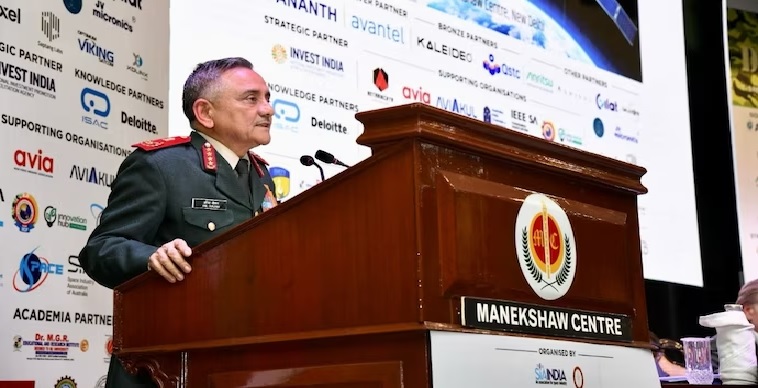
CDS General Anil Chauhan Calls on Private Industry to Strengthening India Defence Space Capabilities
India
Defense News ,India :- India's Chief of Defence Staff, General Anil Chauhan, has highlighted the pressing need to fortify the country's defence space capabilities, particularly in light of China's advancements in anti-satellite weaponry. Addressing the 'DefSat' seminar and exhibition, General Chauhan emphasized the necessity for collaborative efforts from all stakeholders, including private industry, to bolster India's defence space ecosystem.Fortifying Defence Space CapabilitiesGeneral Chauhan underscored the urgency for the Indian armed forces to allocate over 25,000 crore in the coming years to enhance defence space capabilities. This investment is aimed at fulfilling diverse requirements, such as establishing surveillance satellite constellations and secure communication networks. General Chauhan seized the opportune moment for private industry participation, urging the development of a self-sufficient defence space ecosystem.Partnerships and Strategic InitiativesAdvocating for collaboration between the industry and armed forces, General Chauhan called for the augmentation of intelligence, surveillance, and reconnaissance (ISR) capabilities. He stressed the importance of developing multi-sensor satellites, launch-on-demand services, and ground station networks. Additionally, General Chauhan highlighted the need to strengthen indigenous positioning, navigation, and timing (PNT) services, particularly by fortifying the NAVIC constellation.Addressing Space ThreatsAcknowledging the evolving landscape of space warfare, General Chauhan emphasized the significance of counter-space capabilities to safeguard India's space assets. With China advancing in anti-satellite weaponry, both kinetic and non-kinetic systems, the need for defensive and offensive capabilities in the space domain becomes paramount.Government Support and Growth OutlookGeneral Chauhan outlined the government's initiatives to nurture indigenous space capabilities, including support for start-ups and investment incentives. With the space economy projected to reach $44 billion by 2033, government interventions, such as the seed fund scheme and GST exemptions, aim to enhance the private industry's contribution to the sector.A Unified Approach to Space SecurityAs India grapples with the complexities of space security, General Chauhan's call for collaborative efforts echoes the imperative for a unified approach towards enhancing defence space capabilities. With a robust defence space ecosystem and strategic partnerships, India aims to fortify its position in the ever-evolving realm of space warfare.By adhering to General Chauhan's vision and leveraging government support, stakeholders can collectively contribute to India's journey towards self-reliance and resilience in the defence space arena.
Read More → Posted on 2024-02-08 15:37:11World
Defense News , Saudi Arabia :- NTGS, the manufacturer of the ALAKRAN mobile mortar system, and the Kingdom of Saudi Arabia's (KSA) defense conglomerate, ERAF, have entered into a partnership agreement at the World Defence Show 2024. The collaboration aims to manufacture and integrate the ALAKRAN on a suitable vehicle platform within the KSA, aligning with the goals of Saudi Vision 2030 to stimulate the economy through locally sourced components and skilled manpower.Juan Carlos Estrella, CEO of NTGS, and Fahad Al-Ameel, Vice-President of ERAF, signed the agreement, marking a significant step toward enhancing the Kingdom's defense capabilities while fostering economic growth.The ALAKRAN system, known for its versatility and resilience, is designed to address key tactical challenges on the modern battlefield. As a fully digital and automated mortar system, ALAKRAN has proven its effectiveness in diverse operational environments, including urban, desert, forest, mountainous, and snowy terrains. Currently deployed in active war zones globally, it boasts combat-proven capabilities, easily integrating onto various 4x4 vehicles with a minimum 2-ton payload.Julio Estrella, Chairman of NTGS, expressed commitment to the local economy and ERAF, stating, "This agreement with ERAF will usher in a new chapter for ALAKRAN in the Kingdom of Saudi Arabia." The commitment includes the development and manufacturing of the system using locally sourced parts to meet the requirements of the KSA Armed Forces.Abdullah Al-Ameel, Chairman of ERAF, emphasized the global demand for ALAKRAN and its combat-proven status. The partnership with NTGS aligns with ERAF's dedication to supporting the Kingdom's vision by delivering global competitive advances in the local defense industry.NTGS, as an integrated technology and engineering company serving the global defense and security sectors, focuses on designing, manufacturing, and delivering highly mobile fire support assets. Operating with a 'Shoot and Scoot' ethos, NTGS provides advanced solutions tailored to customer specifications and regional requirements, impacting real-world challenges with battle-ready and combat-proven multi-platform solutions.
Read More → Posted on 2024-02-08 15:23:04World
Defense News ,U.S :- General Atomics Aeronautical Systems (GA-ASI) has revealed images of its latest creation, the fully-constructed XQ-67A, an advanced air combat drone developed under a contract to support the U.S. Air Force's covert Off-Board Sensing Station (OBSS) program.The XQ-67A stands out as a stealthy, high-performance drone tailored for extended-range, high-altitude missions. Featuring a distinctive delta-wing design, a single engine, and internal weapons bays, the drone is equipped with an array of cutting-edge sensors, including radar, electro-optical/infrared (EO/IR), and signals intelligence (SIGINT) systems.While there hasn't been an explicit confirmation, previous indications suggest that the XQ-67A leverages the company's ongoing work on Gambit, an innovative family of advanced drones with different airframes that can be integrated into a modular common 'core' chassis.Highlighted by a pair of air data probes on the nose and high-visibility orange markings on its wings and tail, typical of an aircraft undergoing flight testing, the XQ-67A's overall markings closely resemble those seen on the Air Force's XQ-58As and those currently operated by the U.S. Marine Corps.The release of images showcasing the XQ-67A marks a significant milestone in the continual evolution of advanced air combat drones. The capabilities of this drone are poised to influence the future landscape of warfare, attracting close attention from military forces globally.While the OBSS program remains classified, limiting available information on the XQ-67A's specific capabilities or intended use, the unveiling of these images suggests that the drone is approaching the flight testing phase. Further details are anticipated to emerge in the coming months, shedding more light on the remarkable features and potential applications of this cutting-edge drone.
Read More → Posted on 2024-02-08 15:18:30World
Defense News ,China :- Chinese scientists have announced the development of cutting-edge artificial intelligence (AI)-enabled spy technology designed for the People’s Liberation Army (PLA), aiming to leave enemy forces with "nowhere to hide" on the battlefield.The electronic warfare device, created by a team of researchers, promises "seamless, wide bandwidth, and real-time" monitoring of enemy assets. It boasts the capability to detect enemy signals with unprecedented speed, decode their physical characteristics, and neutralize them effectively while ensuring continuous communication for friendly forces.Lead scientist Yang Kai explained that the technology can capture and analyze pulse signals emitted by US armed forces, even if they rapidly switch to civilian frequencies. Moreover, in the event of intercepted and disrupted signals, the device could potentially impact the coordination of US military units on the battlefield.The project team initially believed it was impossible to develop spy technology with such advanced capabilities due to the enormous amount of data that needed processing. Traditional monitoring systems are typically limited by hardware, analyzing within the 40- to 160-megahertz bandwidth. However, the new technology extends this range, enabling seamless detection and monitoring of frequencies in the gigahertz range, including those utilized by Elon Musk's Starlink satellites.Employing artificial intelligence to enhance performance, particularly in differentiating between civilian and military signals and managing large datasets, the researchers believe their creation could bring about "a profound shift" in the way battles are conducted. With its compact size, high performance, and low power consumption, the technology holds the potential to revolutionize electronic warfare and redefine the dynamics of modern conflict.
Read More → Posted on 2024-02-08 15:13:37India
Defense News ,India :- In response to increasing threats from Yemen's Iran-backed Houthis and a surge in pirate activities, India has executed its largest naval deployment in the region, deploying over a dozen warships east of the Red Sea. The move aims to bolster maritime security and counter the rising incidents of hijackings and suspicious approaches by pirates since December 1. Among the strategic measures taken by the Indian Navy is the reintegration of INS Sindhukirti, a diesel-electric submarine, into active service to strengthen its capabilities both on the surface and underwater.INS Sindhukirti: A Soviet-era Submarine with Modern UpgradesOriginally acquired from the Soviet Union in 1990, INS Sindhukirti, a third-kilo-class diesel-electric submarine, is undergoing a comprehensive transformation. Despite its age, the submarine is being equipped with the latest technologies, making it a formidable force on the battlefield. Similar submarines of this class have previously undergone successful refits, incorporating modern electronic systems, sensors, and weaponry.Operational Capabilities and Role of INS SindhukirtiDespite being slower than nuclear submarines, INS Sindhukirti possesses unique capabilities, including the ability to block submarine paths using mines and engage in offensive maneuvers by launching torpedoes and firing missiles. With a speed of 11 knots on the surface and 19 knots underwater, it can operate at depths of up to 300 meters.The submarine, with a length of 72.6 meters, a beam of 9.9 meters, and a draft of 6.5 meters, can accommodate 70 personnel on board during missions lasting up to 40 consecutive days. The ongoing modification at Hindustan Shipyard Limited in Visakhapatnam, with an investment of ₹934 crore, aims to enhance the submarine's weaponry, sensors, and communication systems, extending its service life.Unique Features and Challenges of INS SindhukirtiDesigned in an era prioritizing functionality over comfort, INS Sindhukirti lacks luxurious facilities. The battery pit, housing crucial batteries weighing around 900 kg each, serves as the submarine's primary electrical power source in emergencies. The absence of a shower facility and a single toilet shared by all onboard highlight the submarine's utilitarian design.The submarine's ability to move quietly distinguishes it from others, enhancing its stealth capabilities. The ongoing modifications are a significant step towards modernizing the Kilo-class diesel-electric submarine and advancing India's journey toward self-reliance in defense.Having been out of service for several years due to previous modification challenges, the reactivation of INS Sindhukirti signifies a noteworthy achievement for India's naval capabilities, reinforcing its commitment to maritime security and self-sufficiency.
Read More → Posted on 2024-02-08 15:09:45India
Defense News ,India :- Three incredible women, Squadron Leader Bhawana Kanth, Colonel Ponung Doming, and Lt Commander Annu Prakash, are proudly representing India at the World Defence Show in Riyadh. This five-day event, starting on February 4, is a big showcase of the latest advancements in defence technology, bringing together companies from around the world.India's defence ministry highlighted the significance of having these three outstanding women officers at the World Defence Show. It's a clear sign of the increasing role of Indian women in the defence world.During the event, Squadron Leader Bhawana Kanth, a fighter pilot, stood out as a panelist at a seminar titled 'International Women in Defence - Investing in an Inclusive Future,' hosted by Saudi Ambassador to the US Princess Reema bint Bandar Al-Saud. She shared her inspiring journey, breaking barriers and flying high in the skies. Her insights on leadership, resilience, and the changing role of women in modern warfare resonated with the diverse audience.Squadron Leader Kanth made history as the first woman fighter pilot to participate in the Republic Day Parade in 2021.Colonel Ponung Doming is breaking barriers too; she's the first woman officer to command the world's highest border task force, positioned above 15,000 feet in the Northern sector. With over 20 years of service, Colonel Doming, an engineering officer, has tackled many challenging assignments.Lt Commander Annu Prakash, representing the Indian Navy, showcased her expertise in maritime security and operations at the World Defence Show. Her participation highlighted the crucial role women play in safeguarding India's extensive coastline and ensuring regional stability, according to the defence ministry.The trio was also scheduled to share their remarkable journeys at the International Indian School in Riyadh, emphasizing the inspiring roles women are playing in the Indian defence landscape.
Read More → Posted on 2024-02-08 15:03:37World
Defense News ,Germany :- Germany has dispatched a formidable air defense frigate to join an upcoming European Union naval mission in the Red Sea. The mission, set to launch in mid-February, aims to safeguard merchant ships from potential attacks by Yemen's Iran-backed Houthi militia.The decision to send the frigate comes in response to a series of Houthi attacks that prompted commercial shippers to reroute vessels. The Houthi militia, in control of significant portions of Yemen, claims to act in solidarity with the Palestinians amid ongoing conflicts between Israel and Hamas in Gaza."The basis of our industry and our ability to defend ourselves relies on free sea trade routes," emphasized Vice Admiral Jan Christian Kaack, chief of the German navy, during a press briefing in Berlin. He highlighted the disruptions caused by the current situation in the Red Sea, leading to supply bottlenecks and halting production for some companies. Over 90% of goods destined for Europe and Germany are transported by sea.In December, the United States and other nations initiated a mission to address concerns that disruptions in one of the world's major trading routes could impact the global economy. However, European countries, including France, Greece, and Italy, expressed reservations about the U.S.-led plan, particularly objecting to being under Washington's command.The EU mission, named Aspides (meaning protector), will involve three vessels initially, operating under EU command. Their primary mandate is to protect commercial ships and intercept attacks, with the notable exception of engaging in strikes against Houthi positions on land.The German air defense frigate Hesse, designed for air defense, departed from its North Sea port of Wilhelmshaven to join the Red Sea mission. However, its participation is contingent upon obtaining an EU mandate and national parliamentary approval, expected at the end of February.Equipped with advanced radar systems capable of detecting targets up to 400 kilometers away, the frigate is prepared to counter a range of threats, including ballistic missiles and drones, with a striking distance exceeding 160 kilometers. Vice Admiral Kaack emphasized the vessel's readiness to confront various forms of direct and indirect attacks, ranging from ballistic missiles to drones and remote-controlled boats in kamikaze mode.
Read More → Posted on 2024-02-08 14:56:09World
Defense News ,Poland :- The U.S. Department of State has granted approval for a Foreign Military Sale to Poland, totaling an estimated cost of USD 1.2 billion. This significant deal, sanctioned by the Defense Security Cooperation Agency, includes the provision of airspace and surface radar reconnaissance aerostat systems along with associated logistics and program support.Poland's requested acquisition encompasses a range of cutting-edge military technologies, including airspace and surface radar reconnaissance (ASRR) aerostat systems, airborne early warning (AEW) radars equipped with identification of friend or foe (IFF) capability, electronic sensor systems, mooring systems featuring powered tethers with embedded fiber optics, and ground control systems (GCS). The sale also covers various related elements crucial for logistics and program support.The Defense Security Cooperation Agency emphasizes that this proposed sale is pivotal for enhancing Poland's defense capabilities against both current and future threats posed by enemy air and ground weapon systems. The ASRR aerostat systems will function as an airborne early warning system, enabling Poland to effectively counter incoming regional threats and contribute significantly to future NATO operations. The agency is confident that Poland will seamlessly integrate this advanced equipment into its armed forces.Raytheon Intelligence and Space is slated to be the principal contractor for this comprehensive project. This strategic partnership underscores the United States' commitment to supporting Poland's defense initiatives and bolstering its role within the NATO alliance.
Read More → Posted on 2024-02-08 14:51:45World
Defense News ,South Korea :- South Korea has officially disclosed a $3.2 billion deal signed in November to export air defense systems to Saudi Arabia, with the announcement coinciding with the World Defense Show hosted by Saudi Arabia from Feb. 4-8. The memorandum of understanding signed during the event aims to strengthen defense cooperation between the two nations.The agreement involves the sale of 10 KM-SAM Block II medium-range surface-to-air missile systems, marking a significant export deal for South Korea. A similar weapon system was previously sold to the United Arab Emirates in a $3.5 billion deal signed in January 2022. However, as of late 2023, deliveries to the UAE had not commenced due to ongoing development work on the more advanced Block III active electronically scanned array radar by Hanwha Systems.KM-SAM Block II batteries are manufactured by LIG Nex1, while Hanwha Systems provides the radar, and Hanwha Aerospace supplies launcher vehicles. This versatile weapon system is capable of intercepting both aircraft and missiles, making it particularly crucial for Saudi Arabia, which frequently intercepts ballistic missiles fired by Houthi rebels in Yemen.Kim Jae Yeop, a senior researcher at the Sungkyun Institute for Global Strategy in Seoul, highlighted South Korea's rising profile in the global arms market, attributing it to the nation's technical expertise and industrial capacity. As regional security threats grow, Kim predicts an acceleration in defense cooperation between Seoul and Arab states, positioning South Korea as a reliable supplier of weapon systems to address emerging challenges.Previous arms sales between South Korea and Saudi Arabia, including Raybolt anti-tank missiles in 2017 and K239 Chunmoo multiple rocket launchers in March 2022, demonstrate the expanding collaboration. The new memorandum of understanding emphasizes the establishment of a joint committee to enhance defense industry and technology cooperation. The committee aims to conduct research and development, joint projects, and the production of weapon systems, further solidifying bilateral defense ties. The agreement was witnessed by the respective defense ministers of South Korea and Saudi Arabia, signaling a commitment to long-term collaboration.
Read More → Posted on 2024-02-08 06:02:48Space & Technology
Space News ,India :- Prepare for an unprecedented triple threat on Mars as the Indian Space Research Organisation (ISRO) breaks new ground in space exploration. Beyond mere landing and roving, ISRO is introducing the MARtian Boundary Layer Explorer (MARBLE) – a cutting-edge Mars rotorcraft, essentially a drone, set to redefine the exploration of the Red Planet.MARBLE's Unique Contributions:Unlike traditional missions, MARBLE boasts a unique suite of scientific instruments, enabling it to make high-resolution vertical profiles of critical atmospheric parameters. Equipped to measure temperature, pressure, wind speed and direction, dust levels, and trace gases within the near-surface boundary layer of Mars (the first 100 meters from the ground), MARBLE stands out as a game-changer in Martian science.Key Features of MARBLE's Payloads:1. Temperature Sensor: Measures the Martian chills.2. Pressure Sensor: Feels the pressure of the thin Martian atmosphere.3. Wind Sensor: Catches the Martian breeze.4. Trace Species and Dust Sensor: Sniffs out the composition of the Martian air.5. Electric Field Sensor: Feels the electric pulse of the Martian atmosphere.6. Humidity Sensor: Checks for any traces of Martian moisture.Unprecedented Mission Objectives:MARBLE's mission extends beyond technological prowess; it represents a scientific breakthrough. The data it collects will significantly contribute to:1. Understanding Martian Weather Patterns: Crucial for predicting dust storms and hazards for future crewed missions.2. Studying the Planet's Climate History: Unprecedented insights into Mars's climate changes over time.3. Preparing for Future Exploration: Invaluable data for planning both crewed and robotic missions to Mars.ISRO's Mars Mission: Beyond BoundariesISRO's Mars mission transcends conventional exploration. With MARBLE, they are not merely navigating Mars; they are revolutionizing the approach to exploration. This mission promises to elevate our understanding of the Red Planet to new heights, or rather, new skies! Stay tuned, as ISRO takes us on an extraordinary journey through the Martian atmosphere, expanding the horizons of space exploration.
Read More → Posted on 2024-02-08 05:55:47World
Defense News ,Pakistan :- A leading Pakistani defense conglomerate, Global Industrial Defence Solutions (GIDS), introduced its latest unmanned aerial vehicle (UAV), the Ranger, during the ongoing World Defense Show in Saudi Arabia from February 4-8.Described as a runway-independent tactical UAV, the Ranger is specifically designed for intelligence, surveillance, target acquisition, reconnaissance missions, and artillery fire correction roles. The drone boasts a multi-sensor gimbal payload featuring a high-definition electro-optical sensor, a medium-wave infrared sensor, and a laser range finder, enabling it to conduct both daytime and nighttime operations. Notably, its line-of-sight control extends up to 100 kilometers (62 miles).GIDS highlights the Ranger's autonomous capabilities, empowered by artificial intelligence-enabled payloads. The UAV utilizes four small rotors for vertical lift and a larger pusher rotor for forward propulsion.In addition to the Ranger, GIDS showcased its Fatah II guided multi-launch rocket system, successfully tested in December 2023. The export version of this system boasts an impressive range of 290 kilometers.This exhibition marks GIDS's largest presence at a defense expo to date, signaling its commitment to securing more export deals. The conglomerate aims to entice potential buyers with the prospect of local production, having already made successful sales to countries like Peru and establishing a foothold in the African market.Seeking to strengthen ties with Pakistan's close allies, GIDS signed an agreement with Turkey on the first day of the show. While specific details were not disclosed by a GIDS spokesperson, the move underscores the company's determination to broaden its international partnerships and contribute to the global defense landscape.
Read More → Posted on 2024-02-08 05:51:37World
Defense News ,Pakistan :- Pakistan's recent announcement regarding its intention to procure Chinese fifth-generation FC-31 Gyrfalcon stealth fighter aircraft has set off alarms in India, prompting analysts to suggest an acceleration in India's air force modernization efforts. Air Chief Marshal Zaheer Ahmed Baber's revelation of Pakistan's plans has raised concerns in India about maintaining tactical air superiority along its borders. Analysts speculate that Pakistan may receive up to 36 FC-31 jets by the end of the decade, posing a significant challenge to India's defense strategy.Mustafa Hyder, from the Pakistan-China Institute, views this move as a demonstration of the deepening military cooperation between Pakistan and China, aimed at countering their common adversary, India. The potential acquisition of the FC-31 Gyrfalcon underscores the joint strategy of both countries to address security threats emanating from India.In response, India is facing pressure to expedite its acquisition of American F-35 aircraft or accelerate its Advanced Medium Combat Aircraft program to develop its own stealth combat aircraft by 2032. Harsh V. Pant, a professor at King's College London, suggests that the deal between Pakistan and China compels India to reassess its defense procurement strategies to maintain its competitive edge in the region.The FC-31 Gyrfalcon, also known as J-31 or J-35, signifies China's advancement in stealth technology. While the official designation is pending, prototypes are being developed by the Shenyang Aircraft Corporation, with expectations of deployment in the Chinese navy within the next five years. This development adds complexity to the regional military balance, particularly in light of India's ongoing conflicts with both China and Pakistan over disputed borders.The potential deployment of a fifth-generation stealth fighter by Pakistan presents a formidable challenge for India, given its absence in the current Indian Air Force arsenal. This acquisition would afford Pakistan a tactical advantage, particularly in air-to-air combat scenarios, according to Frank O'Donnell, a senior research adviser. Moreover, Pakistan's close military ties with China facilitate a more streamlined procurement process compared to India's bureaucratic challenges.For India to effectively counter these developments, it must address longstanding issues such as declining squadron strength and delays in the acquisition of foreign and domestic warplanes. Overcoming these challenges is crucial to ensuring India's ability to keep pace with regional adversaries and maintain its strategic interests in South Asia.Despite the addition of 36 Rafale 4.5-generation warplanes from France's Dassault Aviation in the past two years, India's Air Force (IAF) finds itself grappling with a modernization gap, leaving it with 30 to 32 squadrons against the intended strength of 42. Analysts note that the ageing out of the existing fleet has outpaced the IAF's progress in acquiring new aircraft. The shortfall in warplane numbers, crucial for countering threats from China and Pakistan, amounts to approximately 200 aircraft, a gap projected to be only halved by the mid-2030s.India is on the verge of announcing the acquisition of an additional 26 Rafale planes, expected to be deployed on its aircraft carrier. However, addressing this shortage requires a significant political commitment to streamline the defense acquisition process and overcome bureaucratic hurdles, a commitment that has not been adequately demonstrated so far.In response to India's Rafale acquisitions, Pakistan has ordered 25 Chengdu J-10C "Vigorous Dragon" aircraft, emphasizing the escalating regional competition. This move is seen as part of a broader strategy by China to counter India's growing political and defense partnerships with the United States. The Quadrilateral Security Dialogue, including Japan and Australia, has bolstered India's position as a counterweight to China in Asia, departing from its traditional non-aligned foreign policy.Despite Pakistan's forthcoming acquisition of Chinese stealth warplanes, specifically the FC-31 Gyrfalcon, India appears less alarmed, considering the aircraft is still in the developmental stage. Analysts, including Harsh V. Pant of King's College London, suggest that this deal may benefit China more than Pakistan in the long term, given the lag in the FC-31's development.India's necessity to address its aging fleet led to the Rafale acquisitions, while Pakistan, realizing challenges in its long-term relationship with the U.S., sought advanced Chinese fighter aircraft. The China-Pakistan military relationship has strengthened through joint production projects like the JF-17 "Thunder" fighters, guided-missile frigates, and diesel-electric submarines. The potential J-31 deal further indicates the enduring nature of the China-Pakistan military alliance, with the U.S. likely unsurprised by this development.
Read More → Posted on 2024-02-08 05:46:54Search
Top Trending
-
 Agneepath Scheme replaced with Sainik Samman Scheme 2024, Defence Minister Rajnath Singh Relaunched Agniveer Scheme
Agneepath Scheme replaced with Sainik Samman Scheme 2024, Defence Minister Rajnath Singh Relaunched Agniveer Scheme
-
 Pakistan Announces 15% Increase in Defence Budget for 2024-25 Amid Economic Crisis
Pakistan Announces 15% Increase in Defence Budget for 2024-25 Amid Economic Crisis
-
 China's Latest DF-31AG ICBM Test: A Strategic Leap in Global Missile Capabilities
China's Latest DF-31AG ICBM Test: A Strategic Leap in Global Missile Capabilities
-
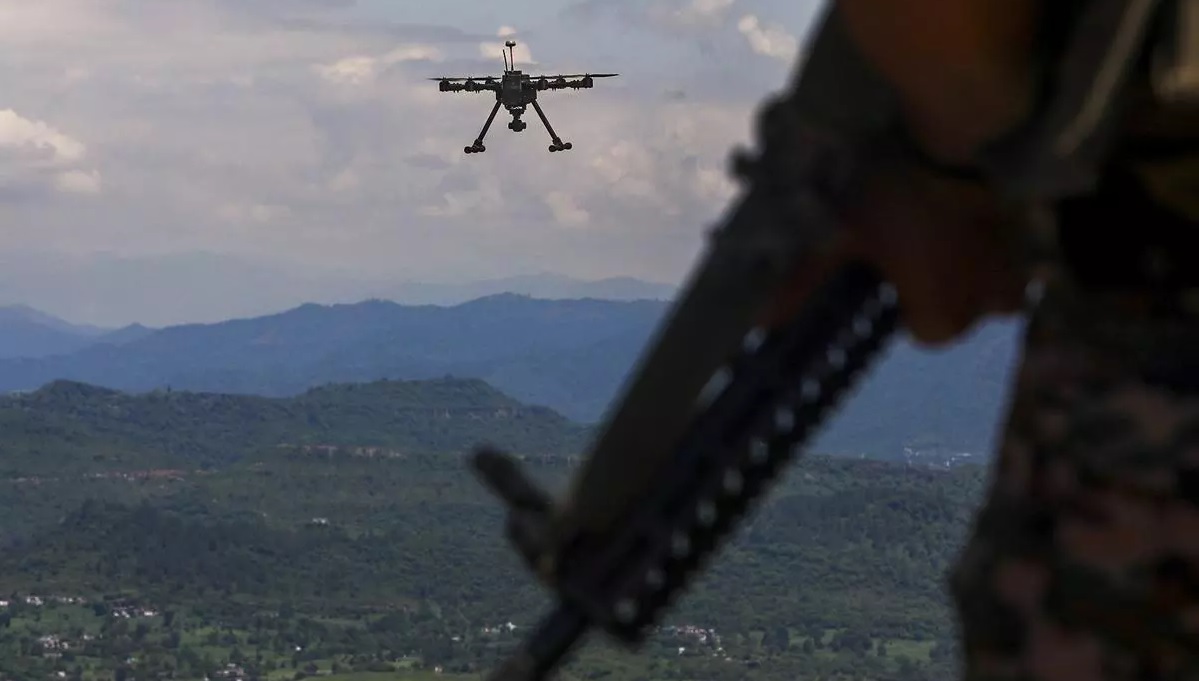 India's Defence Ministry Warns Against Chinese Parts in Military Drones Amid Security Concerns
India's Defence Ministry Warns Against Chinese Parts in Military Drones Amid Security Concerns
-
 China’s Super Radar Detects Mysterious Plasma Bubble Over Giza Pyramids
China’s Super Radar Detects Mysterious Plasma Bubble Over Giza Pyramids
-
 India's Indigenous Kaveri Engine Program with New Focus on Thrust and Performance
India's Indigenous Kaveri Engine Program with New Focus on Thrust and Performance
-
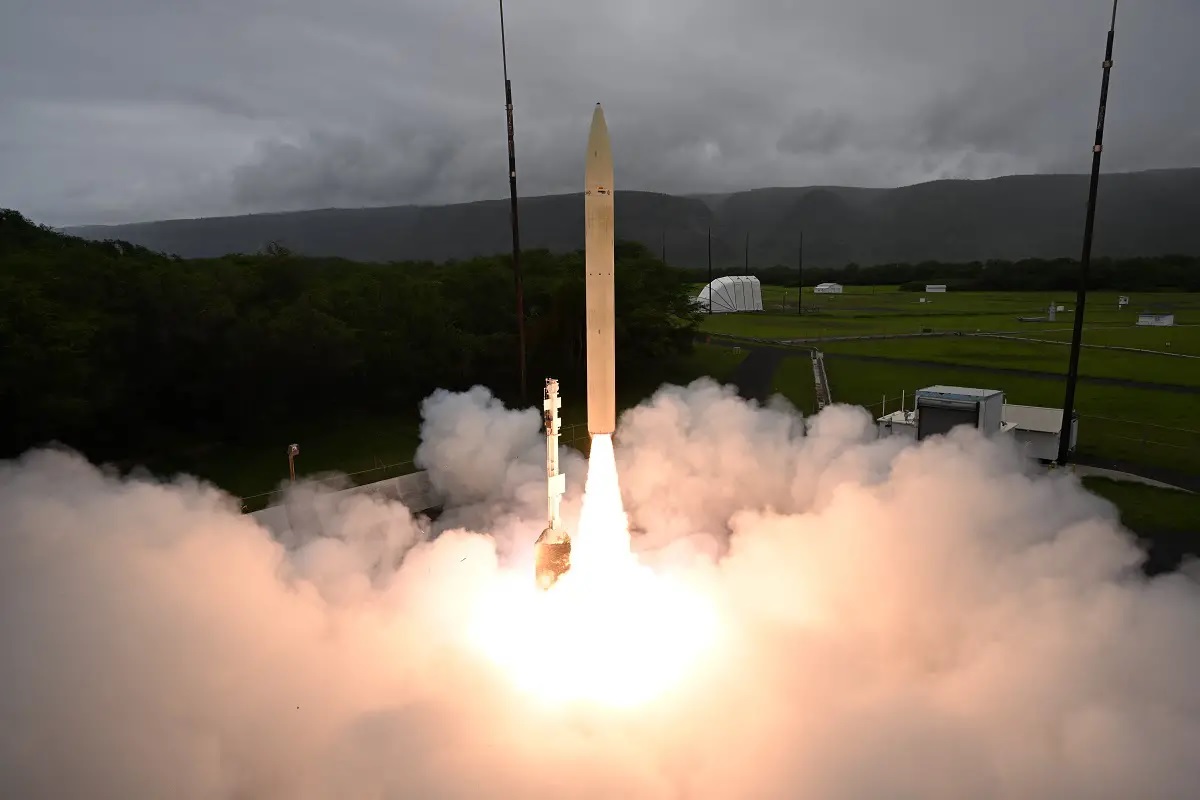 Successful Hypersonic Missile Test by U.S. Department of Defense
Successful Hypersonic Missile Test by U.S. Department of Defense
-
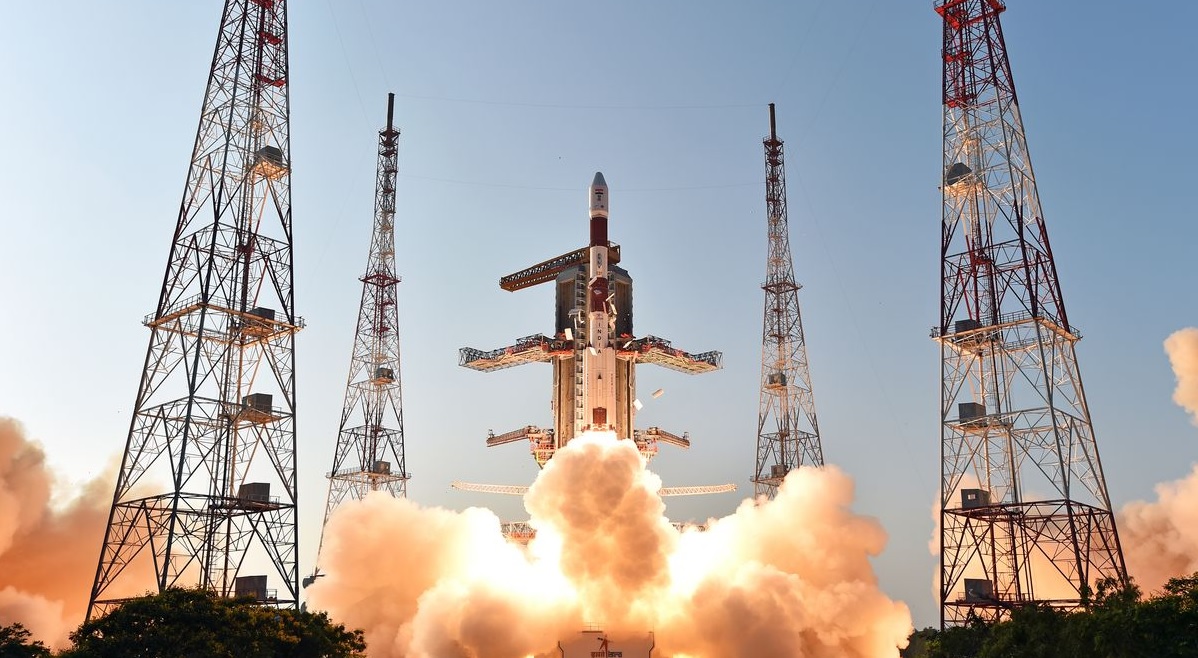 Isro Draws up Ambitious Plan for 2024, says will Launch at Least 12 Missions
Isro Draws up Ambitious Plan for 2024, says will Launch at Least 12 Missions
Top Trending in 4 Days
-
 Russian Scientists Develops Cancer Vaccine, will Distribute Free from 2025 in Russia
Russian Scientists Develops Cancer Vaccine, will Distribute Free from 2025 in Russia
-
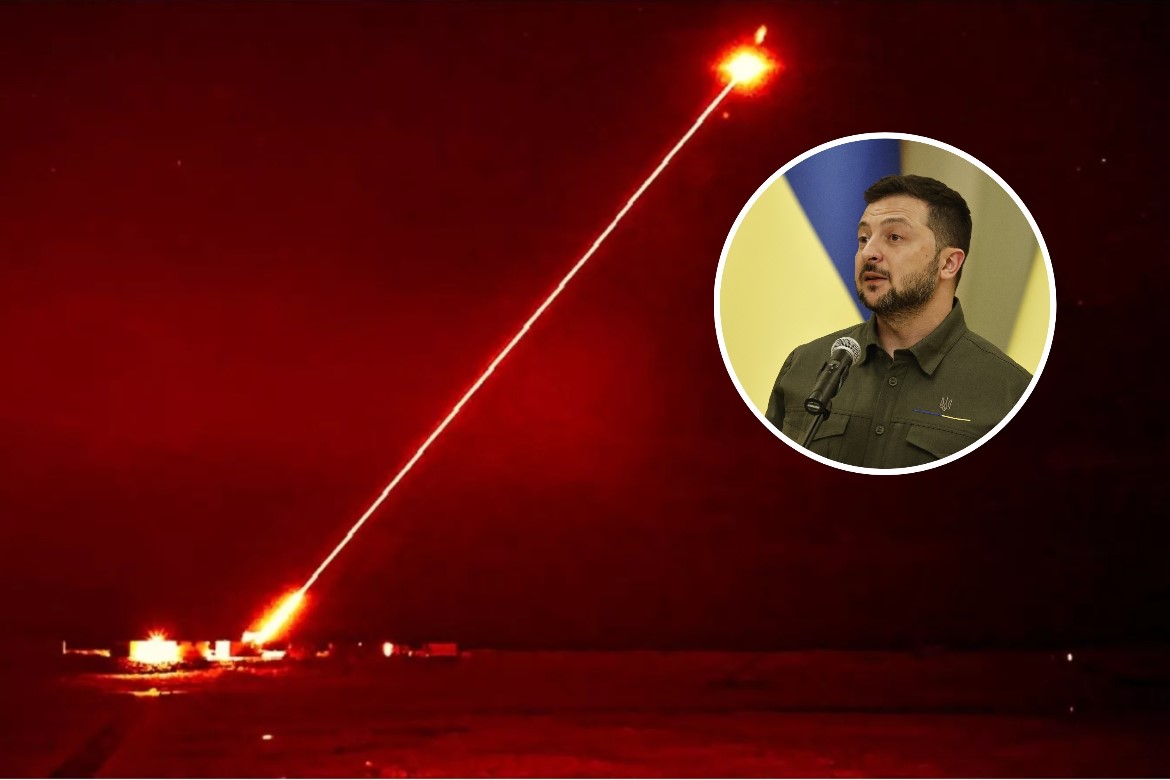 Ukraine Becomes First to Deploy Laser Weapon ‘Tryzub’ in Drone Defense Push
Ukraine Becomes First to Deploy Laser Weapon ‘Tryzub’ in Drone Defense Push
-
 Lockheed Martin Unveils Astris AI to Drive Secure and Scalable AI Solutions
Lockheed Martin Unveils Astris AI to Drive Secure and Scalable AI Solutions
-
 Russia’s ‘Kalinka’ System Threatens Starlink: A Major Setback for Ukraine and Elon Musk’s SpaceX
Russia’s ‘Kalinka’ System Threatens Starlink: A Major Setback for Ukraine and Elon Musk’s SpaceX
-
 Zuchongzhi 3.0 vs. Google’s Willow: Chinese Quantum Computer Matches U.S. Rival in the Race for Superiority
Zuchongzhi 3.0 vs. Google’s Willow: Chinese Quantum Computer Matches U.S. Rival in the Race for Superiority
-
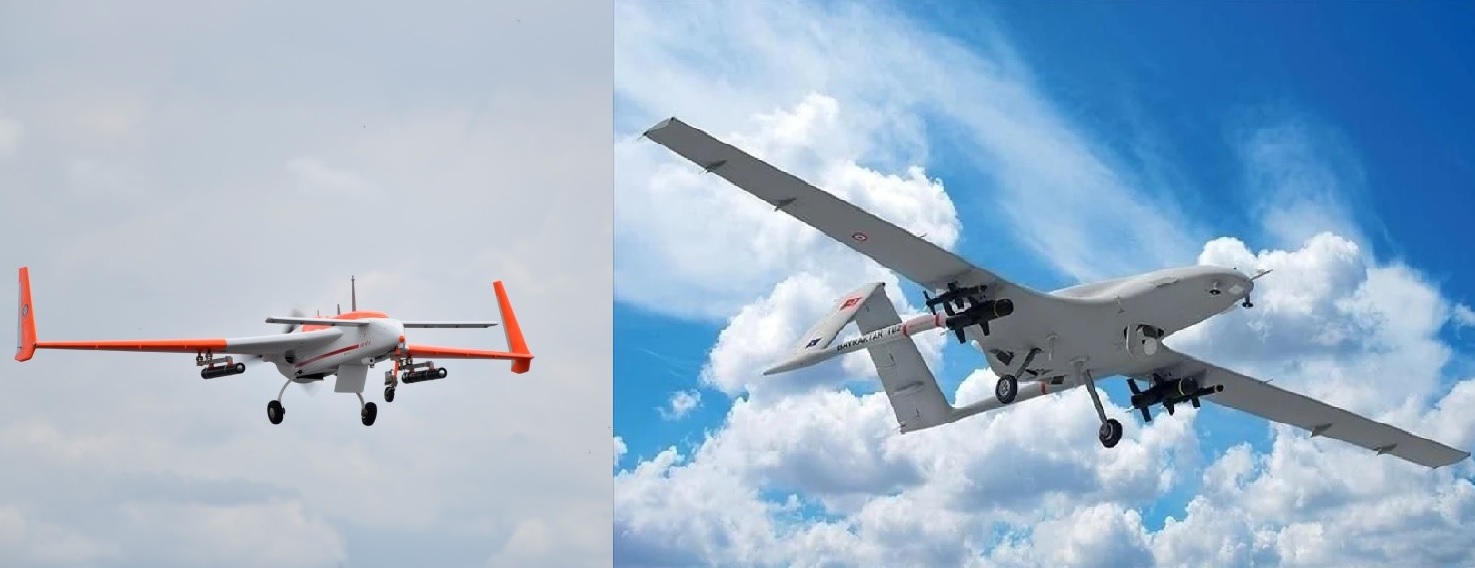 SRUAV-Weaponised vs Bayraktar TB2: A Detailed Comparison of India’s and Turkey’s Armed Drones
SRUAV-Weaponised vs Bayraktar TB2: A Detailed Comparison of India’s and Turkey’s Armed Drones
-
 Russian General Igor Kirillov Killed in Moscow Bombing
Russian General Igor Kirillov Killed in Moscow Bombing
-
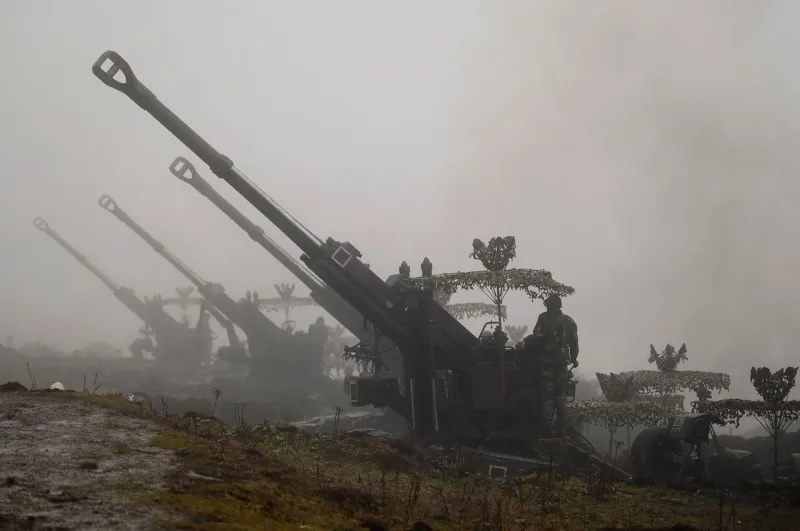 Pentagon Report: China Stations 120,000 Troops, Tanks, and Missiles Near Indian Border
Pentagon Report: China Stations 120,000 Troops, Tanks, and Missiles Near Indian Border


